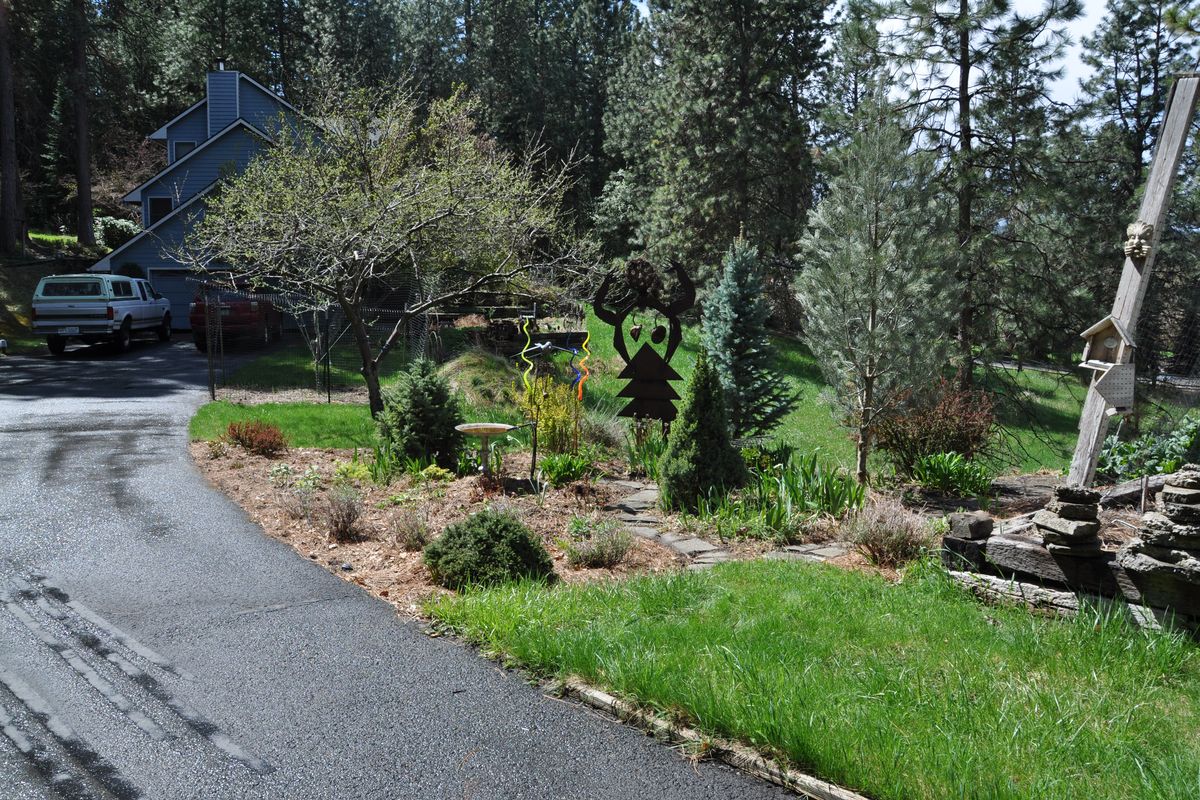Gardening: Treat lawn for crabgrass or consider no-grass yard, water conservation
Replacing lawn with more water thrifty plantings can go a long way to reducing landscape water use. This bed in Pat Munts yard was expanded in spring 2020 to take out a piece of lawn that was awkward to mow. The rest of the lawn will eventually be replanted with plants that support pollinators. (Pat Munts/For The Spokesman-Review)Buy a print of this photo
New, green grass appeared in my backyard this last week, right on schedule. Not only does that tell me spring has come to my cold garden, it also tells me it’s time to think about spring lawn care.
If you have a problem with crabgrass, you have a short window to get pre-emergent granules on the lawn. This is the only way and time you can get control on the lawn. Once crabgrass is up, there is no way to control it that won’t also kill the lawn.
Now’s the time to tune up your mower and get the blades sharpened. Dull blades tear the tips of the grass blades off leaving a ragged edge that turns brown, leaving the lawn with a frayed look.
Philosophies on fertilizer application have changed in the last decade. It used to be that we fertilized in early spring, Memorial Day, 4th of July and Labor Day. It is now recommended that we fertilize in the spring and then in September just before the lawns go dormant. What we fertilize with has also changed. Rather than using high nitrogen urea-based fertilizers that releases their nitrogen quickly, lawn experts now recommend using slow-release fertilizers that release their nitrogen over the span of several weeks.
The reason for using slow-release fertilizers is high nitrogen, quick release fertilizers release so much nitrogen that the grass plants are stimulated to grow too fast and can’t develop strong roots that reach deep in the soil. The grass blades may be a deep, dark green but the roots can’t keep up with the growth. As soon as the hot July and August weather hit, the plants can easily be stressed. Slow-release fertilizers release their nitrogen in a way that the grass plant can use it and still build strong roots.
A lawn treated with a slow-release fertilizer isn’t going to be as dark green, but it will be healthier and not need as much water during the hot weather.
Speaking of water usage, have you considered reducing or taking out your lawn area? A recent study of landscape water use found Spokane was near the top in the amount of water we use on landscaping when compared to other cities. We have been spoiled by having access to the Spokane Valley Aquifer.
The city of Spokane’s SpokaneScape program can help address this with incentives to reduce the amount of lawn you maintain and replace it with more drought tolerant plantings or landscape elements that don’t involve lawn. They also offer ideas on how to make your irrigation system more efficient.
The program offers a rebate of up to $500 on your utility bill when you remove lawn and replace it with more drought tolerant plantings. The process to earn the rebate involves applying to the program, developing an approved design and then getting the new design installed. If tearing out lawn isn’t doable this year, their website, SpokaneScape.org, has lots of ideas you can easily implement at whatever scale you can manage.
